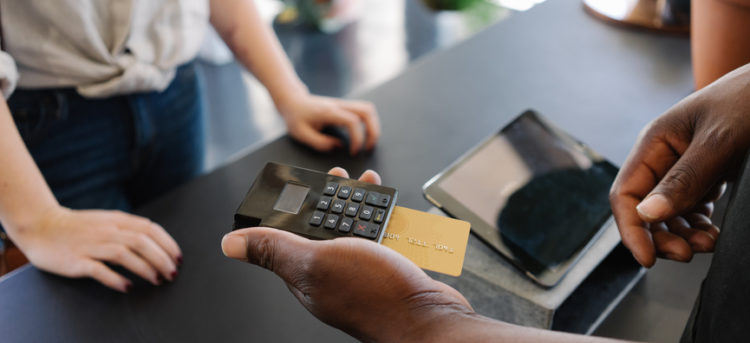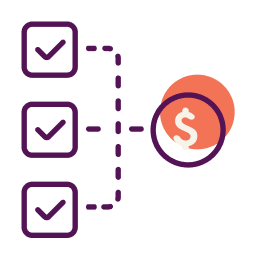So you’ve finally decided to start your business. You have aligned the capital, the location, the business plan, and the investors. You’ve created the strategic plan to acquire X amount of revenue, for X amount of expenses, within Y amount of time, which should produce Z amount of profits.
Research shows that your prospective customers would more than likely use credit and debit cards for many of their purchases, and you run into a hiccup when trying to do something that’s seemingly simple: setting up a merchant account. You apply through a referral from your bank, only to discuss that you are declined because your company is in a “high-risk industry”.
What “High Risk” Means to the Merchant Processor
Some businesses will fall into the “high risk” category, in terms of merchant account boarding, even if their credit score is solid, financials are great, and prospective operational history will be stellar. What’s driving your high risk status is that of the operational history of the competitors and predecessors within your market. The history that various merchant processing organizations had with your competitors and predecessors in relation to chargebacks and other related fraud, lead them to label your organization in various forms of “high risk”. This label will either require more documentation for approval, or it will be an automatic decline out of the gate.
In this article I will discuss why certain merchants are considered “high risk”, how to predict if your business will fall into a high-risk category, and what types of fees (upfront, recurring, and required reserve accounts) might be required as a result.
Who is Considered High Risk?
A variety of merchants can be labeled high risk, here’s a list of some of the general categories even though this is by no means, a complete listings:
- Merchants on the TMF List, which represents merchants who’ve previously had their merchant accounts shut off due to billing, chargeback, or other issues
- 3rd party processors
- Air and water purification
- Bail bonds
- Bankruptcy attorneys
- Collection agencies
- Credit repair
- Dating/porn sites/escorts/massage parlors
- E-tobacco
- Extended warranty
- Gaming and lotteries
- Golf clubs online
- Importers and exporters
- Home-based gun shops
- MLMs
- Online pharmacy
- Pawn shops
- Telemarketing
- Travel companies
- Used car companies
Why A Merchant Is Labeled High Risk
A merchant account is an unsecured line of credit provided by the merchant processing company. When a customer spends $200 at your business, you get that $200 within 24 – 48 hours rather than waiting for the customer to receive their credit card statement and pay for the purchase over time. This is where the merchant processing company bridges the gap.
In the case of a fraudulent charge made at your business, the cardholder whose card was charged can initiate a chargeback dispute and, if they win, this would require the merchant to refund the purchase amount of the transaction. But if the merchant processing company goes to deduct the refund from the merchant’s bank account and they don’t have a high enough balance, then the merchant processing company would be responsible for paying for the refunded transaction.
This is why when approving a merchant for a merchant account, the merchant processing company is looking at the estimated likelihood of the merchant generating a lot of chargebacks. “Card Not Present” merchant accounts, which are accounts for which the customer does not need to show a card to the merchant to purchase (for example, online purchases), are by far the riskiest.
Expect Harder Underwriting
You might be required to provide 12 months of bank statements, 12 months of prior processing statements (if you are currently processing), financials, tax returns, incorporation paperwork, and other related information during the underwriting process. It will feel as though you are applying for business financing. Also, expect longer underwriting times, as it might take about a week to come to a decision on your account.
Expect Higher Merchant Account Fees
If you are approved domestically for a merchant account, expect higher-than-market rates for your account. Also expect to pay higher monthly statement fees, higher transaction fees, and be required to keep a cash reserve set aside. There’s also the chance that no domestic merchant processing company will approve your account, which then means you have to look for an offshore solution. With offshore solutions, expect even higher rates and fees.
Are You Really High Risk?
I’ve seen some merchants get declined with one merchant processing company due to a high risk label, and get approved without the label from another company.
This is why it’s sometimes good to work with a trusted, knowledgeable, payments professional that knows the market, knows the best platforms, and knows where to submit your profile for approval.
The Final Word
Depending upon which report you view, credit and debit cards account for around 50% – 60% of all transactions being made today. So it’s important that you aren’t shut out from the growing trend in the marketplace to utilize plastic. Even if you are in one of the high risk categories listed above, there should be a domestic or offshore merchant processing company that can service your account.
This article was originally written on June 12, 2017 and updated on February 1, 2021.


Thanks for the sharing the information about high risk merchant account I am very familiar with the entire set-up, and have done work almost identical to the ones shown.